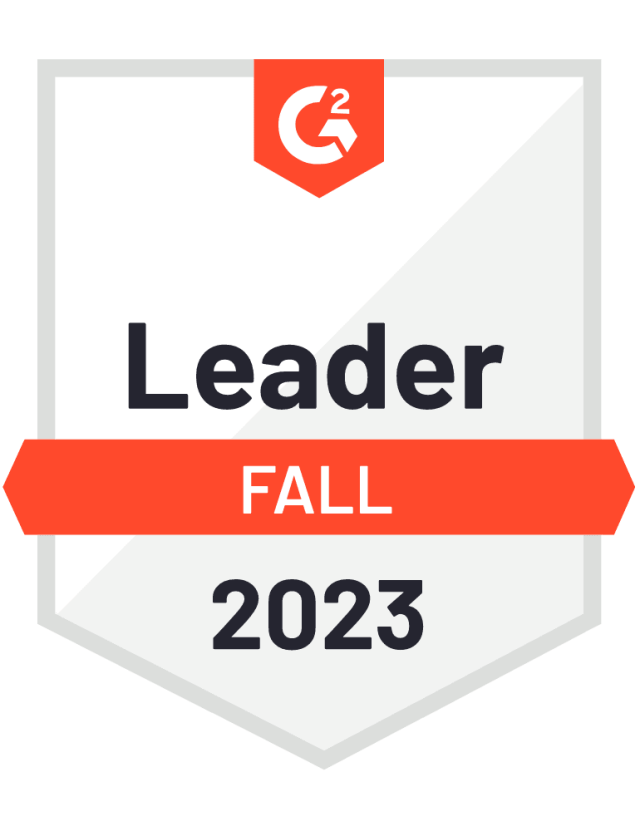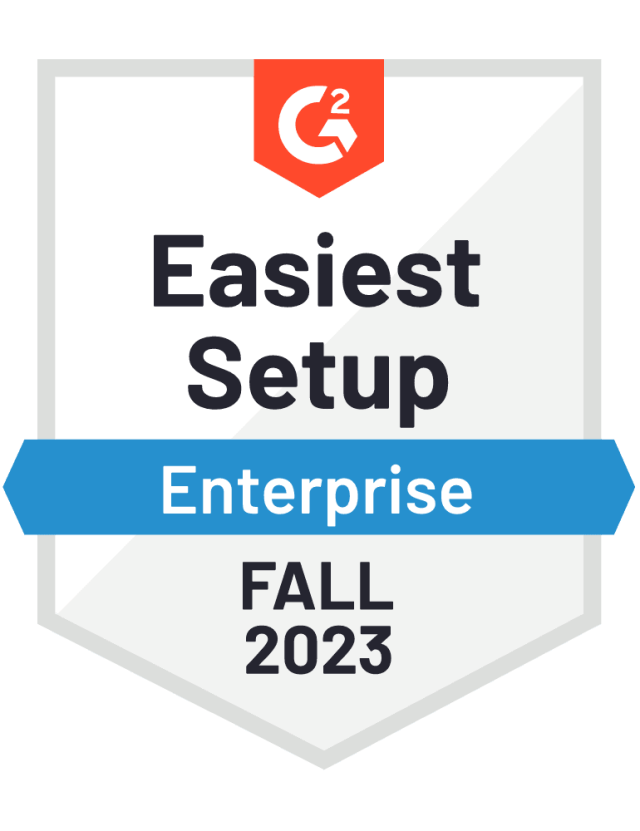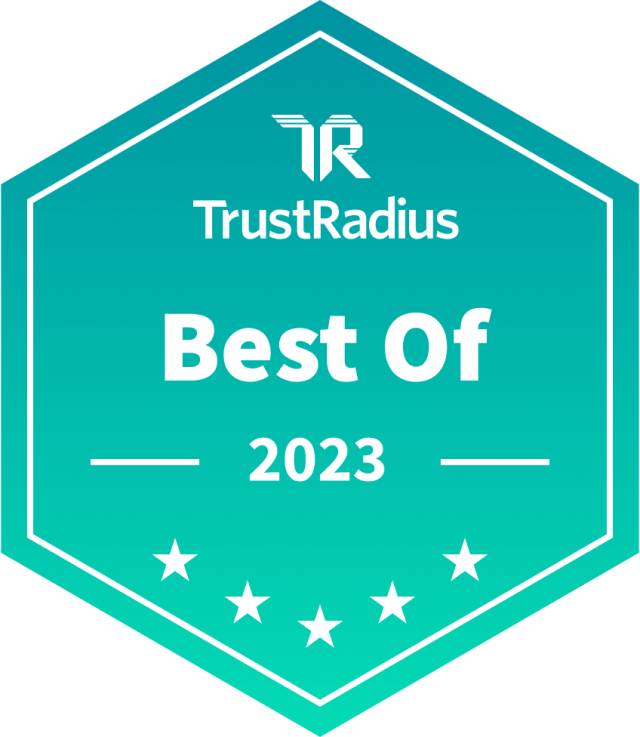Chatbots are gaining popularity as a self-service tool because they are versatile enough to be used across the customer journey. From helping customers decide to buy a product, make a purchase, or get post-purchase support, bots can be a valuable addition to your engagement strategy.
What are customer service chatbots?
There are many different types of chatbots on the market. Some help with sales and marketing, some are just for fun, but today we’re talking about chatbots specifically designed for customer service and support.
A customer service chatbot is a conversational interface customers engage with to resolve issues and find answers to questions.
This technology has been a game-changer for self-service since it allows customers to solve their own issues – without the aggravating user experience of searching all over the website or reading FAQs. Customers simply type their question in plain language (or choose from pre-set conversation prompts) to quickly find an answer.

Why should you use a chatbot for customer service?
By making easy answers available during every step of a customer’s digital journey, regardless of the time of day or channel they are using, customer service chatbots make for a better overall experience. In fact, a recent survey from Astute (now Emplifi) found that chatbots rank in the top three most preferred ways for consumers to contact companies when they have a question or complaint.
But what about the quality of these bot interactions? According to Forrester research, two-thirds of consumers are skeptical of chatbots’ abilities to provide interactions on the same level as human customer service agents, and more than half actually expect chatbot interactions to be sub-par. This is likely due to the fact that this technology is still somewhat new and many companies are not yet following best practices.
However, the instant and convenient nature of chatbots can help brands deliver on what matters most to consumers during service interactions: valuing their time.
When done well, chatbots help companies make meaningful progress. For example, Forrester interviewed executives from enterprises that had deployed a customer service chatbot, and they found:
88% experienced a deflection or reduction in the volume of emails, live chats, and phone calls
75% had an improvement in cost savings
71% saw an increase in customer satisfaction
With these potential benefits in mind, let’s explore what deploying a customer service chatbot really looks like.
What the best customer service chatbots have in common
Like we mentioned above, many consumers go into a chatbot interaction actually expecting it to be a negative experience. How can you avoid this pitfall and ensure your customer service chatbot far exceeds their expectations?
The best service chatbots all have the following things in common.
They are omnichannel and omnipresent. Customers should be able to engage with your bot on every page of your website, as well as on your mobile app, social messaging like Facebook Messenger, and SMS.
They are smart about sourcing answers. Instead of requiring you to create every reply from scratch, best-in-class service chatbot platforms can auto-generate knowledge content and source answers from business systems and trusted third-party sites.
They integrate AI functionality. Leveraging artificial intelligence tech like machine learning and natural language processing means your bot is smarter right out of the gate, and gets more accurate over time.
They let customers connect to a live person. For some cases, and some customers, engaging with a live agent will be the better choice. The best bots allow instant, effortless escalation to an agent.
Customer service chatbots sound promising, so what’s the catch? The technology is still new enough that many companies are struggling to implement a high-quality customer service chatbot.
A big part of ensuring a successful chatbot deployment is mapping out the components of your interactions.
8 elements of a great customer service chatbot interaction
There are several core components for chatbot interactions, each serving a distinct purpose within the conversation. Here are some examples of customer service chatbot components you should consider including in your chatbot:

1. Greet the customer and introduce the bot's capabilities.
Set the right expectations from the start, as this can go a long way to improving satisfaction. Consumers understand that bots may only be able to handle a finite set of tasks as the technology continues to mature. Plus, chatbots are not supposed to be a replacement for your live agents, but a way to offload and augment.
2. Offer a menu of common questions.
More and more brands are deploying customer service chatbots, but experiences still vary widely from company to company. Drawing attention to menu options is a great way to guide customers, especially if they’re unsure of what to do next.
3. Communicate in a conversational way.
Many companies struggle with transitioning from the more formal, professional language many customer service agents are trained to use, with a more conversational feeling needed for digital interactions with a bot. The bot should be clear, direct, and conversational, instead of overly formal or flowery. Try using words like "so" and "okay," as well as contractions like "I’ll" and "you’re," to introduce a friendlier, more human feel into the conversation.
4. Give and acknowledge gratitude.
Manners help make the conversation feel more natural. Where appropriate, ensure your bot says "please," "thank you," and "you’re welcome," just as your live agents would.

5. Offer easy ways to escalate to an agent.
Offloading interactions to a bot comes with a risk of making customers feel not important enough to merit a human – and the best way to overcome this negative feeling is by always offering an easy "escape hatch" where the customer can immediately connect with a live agent.
The best-case scenario for a chatbot escalation is transitioning to live chat with an agent (whether text, voice, or video) and staying within the original channel and device. If live chat is not available, add information on your phone number or email address. And always make sure to provide context to live agents during an escalation for a smoother transition from bot to human.
6. Use Quick Replies to help customers continue the conversation.
According to research from SoftwareAdvice, 90% of consumers say they have had poor experiences when seeking customer support on mobile. Designing chatbot interactions with an eye towards your mobile users can make a huge impact in this area.
Try to minimize the amount of typing a customer has to do, since this can be especially frustrating on a mobile device. Instead, give them the ability to quickly click a reply and move the interaction forward.
7. Acknowledge when an escalation is happening.
Not only should escalation to a live agent be easy to do, it should be clear when it is happening. Make sure the process is seamless for your agents, too, by allowing them to pick up incoming cases from all channels within a single interface, and by providing them relevant context about the customer and the bot interaction.
A final consideration for a smooth transition: if the customer is not logged into your website or app, think about what information will be needed from them to create a case to pass to the agent. Try to balance ease-of-use with collecting the necessary data points. Collecting an email address is likely the bare minimum of information needed.
8. Collect feedback.
A feedback mechanism within the bot makes it easy for customers to rate the answers they received, so you know where to improve. Make sure your tool is also providing analytics on conversations, giving insight into questions that went unanswered. A machine learning component within your bot platform can cluster related queries into broader topics to show opportunities for creating new content.
What makes Emplifi’s customer service chatbot different
Your customers' experience is too important to entrust to a free, generic bot builder tool. By contrast, Emplifi offers an award-winning customer service chatbot - Emplifi Bot - that's integrated within a unified CX platform, which provides the best possible outcomes for enterprise customer care teams.
Here are a few other ways Emplifi Bot is different from the rest:
One platform, many channels. Our technology lets you configure the core bot once, and deploy it easily across multiple channels. This makes it easier to get started and to maintain over time, while also allowing you to tailor the experience to suit each channel.
Built-in flexibility. The world of AI and natural language processing is evolving quickly and continuously. That's why Emplifi Bot is designed to plug into today’s leading AI technologies while also being set up to leverage new tech as it becomes available.
A user-friendly approach to content. The chatbot’s knowledge engine can auto-generate responses from existing content, and also makes it easy to author new content. The back-end system is a drag-and-drop interface designed for business users (not IT or developers).
Expert guidance. Emplifi's been in the customer care business for more than 25 years, and our team of experts is ready to help create a customer service chatbot that best suits your industry, customer base, and internal KPIs.
Emplifi Bot helps brands deliver conversational support interactions across a variety of digital channels. Watch the 2-minute demo below to learn more, or schedule a live demo today.
Editor's Note: This article was originally published on astutesolutions.com. Any statistics or statements included in this article were current at the time of original publication.

















